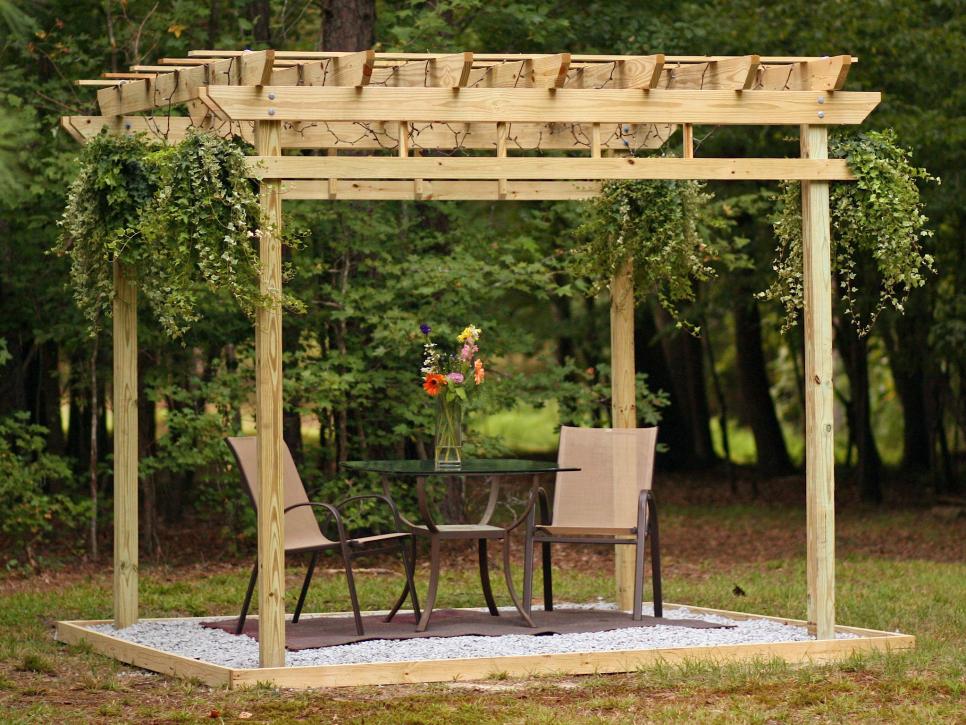
Contents
– Building a pergola: where to put it?
– Different shapes to build a pergola
– Building a pergola: standard or custom?
– Choosing the materials for the pergola to be built
– Building a pergola: installation formalities
Are you building a pergola? You must first proceed in stages and draw a plan to build your pergola. Without further ado, let’s take a look below.
Building a pergola: what location?
To determine the exact location of the pergola, you need to:
– Measure the available space;
– Determine the sun’s exposure to calculate the shaded areas.
The question of the location of the pergola depends on the configuration of the house. The pergola can be:
– Leaning against the front of the house:
◦ a good choice if there is already a terrace;
◦ allows direct access to the house without going through the garden;
◦ regulates the temperature inside the adjoining room.
– Self-supporting:
◦ placed in the middle of the garden and connected to the house by a driveway (for example;
◦ set in a garden corner: hidden by vegetation to create an intimate space;
◦ next to the house.
Different shapes to build a pergola
At this stage, the easiest thing to do is sketch the desired shape on paper to develop the first plan.
In general, pergolas are square or rectangular, but there are all types of shapes:
– triangular: three feet;
– square: four feet;
– rectangular: four feet;
– hexagonal: six feet;
– octagonal: eight feet.
Building a right-angled, square or rectangular pergola will make it look larger than a round or triangular, hexagonal or octagonal pergola.
If the pergola is leaning against a wall, you will probably lose some space: on the other hand, this type of installation brings a touch of originality to your home.
Are you building a pergola? Standard or custom?
To determine the dimensions of the future pergola, we must start from the available surface.

Pergola dimensions: depending on the use
The surface area of the pergola depends on the use of what you want to do with it:
– support for plants: a simple arch for climbing plants;
– a break for walking: an arch with a bench;
– an outdoor living room: a pergola with a small table and outdoor armchairs;
– a summer dining room: a dining table and chairs.
Building a pergola: 18 m² on average
It is possible to choose standard dimensions (kit) or custom-made.
On average, here are the dimensions of a pergola:
– height: from 2 to 4 meters;
– width: from 3 to 4 and up to 5 meters;
– length: 3 to 6 meters;
– average surface: 18 m².
Once the dimensions are established, do not hesitate to mention them in your plan.
Important: if it is a lean-to pergola and the roof is sloped, the house roof height counts. On the garden side, measure a minimum height of 2 meters to avoid spoiling the view.
Choose the materials for the pergola to be built
The choice of material(s) for the pergola to be built depends on the use you wish to make of it:
– to grow plants: wood and wrought iron;
– to keep it for a long time without needing to maintain it: aluminium;
– a short term use: PVC.
Building a pergola: installation formalities
Once you have drawn up an initial plan and chosen the materials and dimensions, two steps are taken.
Who is in charge of building the pergola?
If you are a handyman, you can build your pergola yourself.
If your dimensions are standard or you want a custom-made pergola, you can call Lifestyle Landscaping for decking and pergolas.
Permits to be requested to build a pergola
For these formalities, contact the town hall of your municipality of residence.
Before starting the construction, you must respect the steps imposed by the Local Urban Plan of your town:
– if the pergola measures more than 20 m², a building permit is required;
– if you live near a listed monument, you must request authorization from the architect of the buildings of Australia;
– the installation of a wall-mounted pergola will be subject to a prior declaration of works as it modifies the external aspect of the house.
Important: any failure to comply with the legal obligation to obtain a declaration of works or a building permit is a criminal offence. The persons concerned are fined and must demolish the work at their own expense.

One Reply to “Building a Pergola: Before You Start”